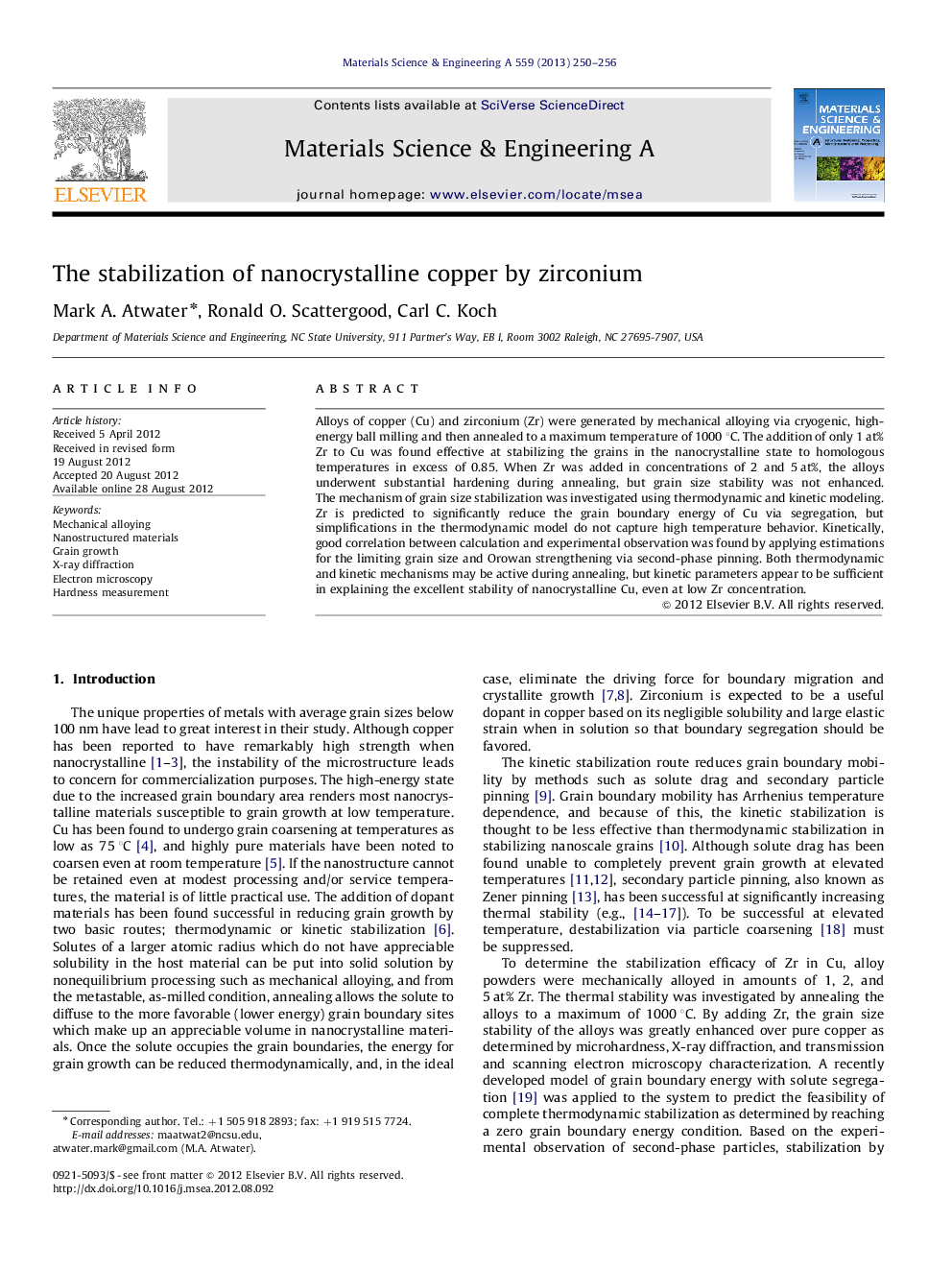| Article ID | Journal | Published Year | Pages | File Type |
|---|---|---|---|---|
| 1576656 | Materials Science and Engineering: A | 2013 | 7 Pages |
Alloys of copper (Cu) and zirconium (Zr) were generated by mechanical alloying via cryogenic, high-energy ball milling and then annealed to a maximum temperature of 1000 °C. The addition of only 1 at% Zr to Cu was found effective at stabilizing the grains in the nanocrystalline state to homologous temperatures in excess of 0.85. When Zr was added in concentrations of 2 and 5 at%, the alloys underwent substantial hardening during annealing, but grain size stability was not enhanced. The mechanism of grain size stabilization was investigated using thermodynamic and kinetic modeling. Zr is predicted to significantly reduce the grain boundary energy of Cu via segregation, but simplifications in the thermodynamic model do not capture high temperature behavior. Kinetically, good correlation between calculation and experimental observation was found by applying estimations for the limiting grain size and Orowan strengthening via second-phase pinning. Both thermodynamic and kinetic mechanisms may be active during annealing, but kinetic parameters appear to be sufficient in explaining the excellent stability of nanocrystalline Cu, even at low Zr concentration.
